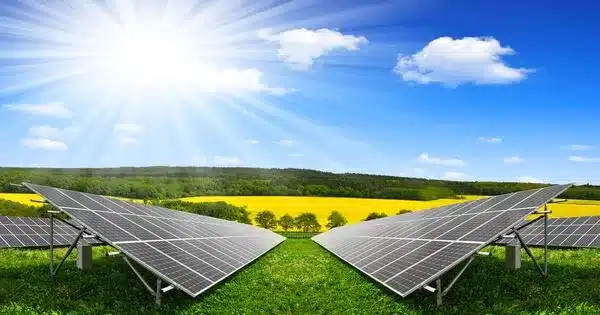Solar thermal energy (STE) is a type of energy and technology that uses solar radiation to produce thermal energy for use in industry, as well as in the residential and commercial sectors. It is a renewable energy technology that uses solar heat to generate electricity or heat for a variety of applications. Solar thermal systems, as opposed to solar photovoltaic (PV) systems, absorb the sun’s heat and use it to generate electricity or supply heat for industrial, commercial, or residential purposes.
The United States Energy Information Administration categorizes solar thermal collectors as low-, medium-, or high-temperature collectors. Unglazed low-temperature collectors are commonly used to heat swimming pools or ventilation air. Medium-temperature collectors, which are typically flat plates, are used to heat water or air for home and commercial applications.
Here’s how solar thermal energy works:
- Solar Collectors: Solar thermal systems typically consist of solar collectors or concentrators that capture sunlight. These collectors can take various forms, such as flat-plate collectors, concentrating collectors with mirrors or lenses, or evacuated tube collectors. The choice of collector depends on the specific application and temperature requirements.
- Heat Absorption: The collectors are designed to absorb and convert sunlight into heat. This heat can be used directly or transferred to a heat transfer fluid (like water or a heat transfer oil) circulating through the collector.
- Heat Transfer: In some systems, the heat transfer fluid carries the collected heat to a heat exchanger, where it transfers its heat to a working fluid, usually a volatile liquid or gas like water or a specialized heat transfer fluid.
- Electricity Generation or Heat Production: The elevated temperature of the working fluid is utilized to create electricity in a power cycle (such as a Rankine cycle) or to provide space heating, hot water, or process heat. How heat is used is determined upon the application.
High-temperature collectors use mirrors or lenses to focus sunlight and are commonly used in industries to meet heat requirements of up to 300 deg C / 20 bar pressure and for electric power generation. Concentrated Solar Thermal (CST) for meeting heat requirements in industries, and Concentrated Solar Power (CSP) when the heat collected is utilized to generate electricity. In terms of application, CST and CSP are incompatible.
Advantages and application
Solar thermal energy provides various advantages, including the capacity to generate both electricity and heat, high energy efficiency, and the ability to store energy via heat storage systems. It does, however, confront obstacles such as intermittent operation (depending on daylight hours and weather conditions), the necessity for appropriate sunshine, and the cost of installation and upkeep.
Solar thermal technology has been utilized for decades in many parts of the world to generate energy, heat water, and power industrial processes. Technological advancements and increased interest in renewable energy sources have resulted in continued research and development in the field of solar thermal energy.












